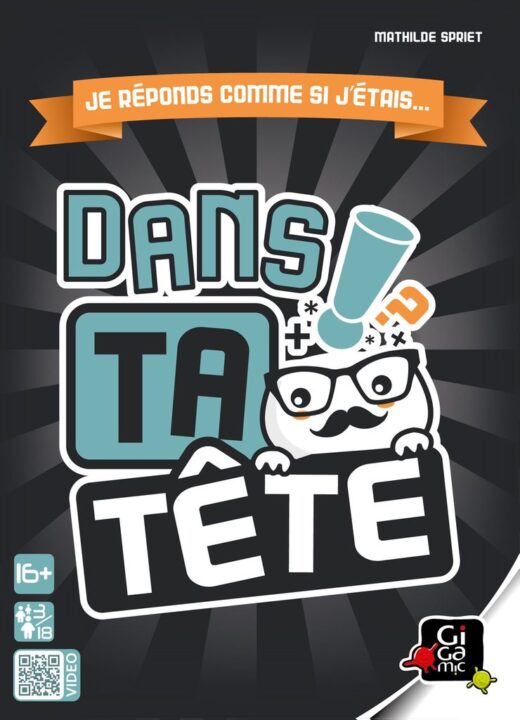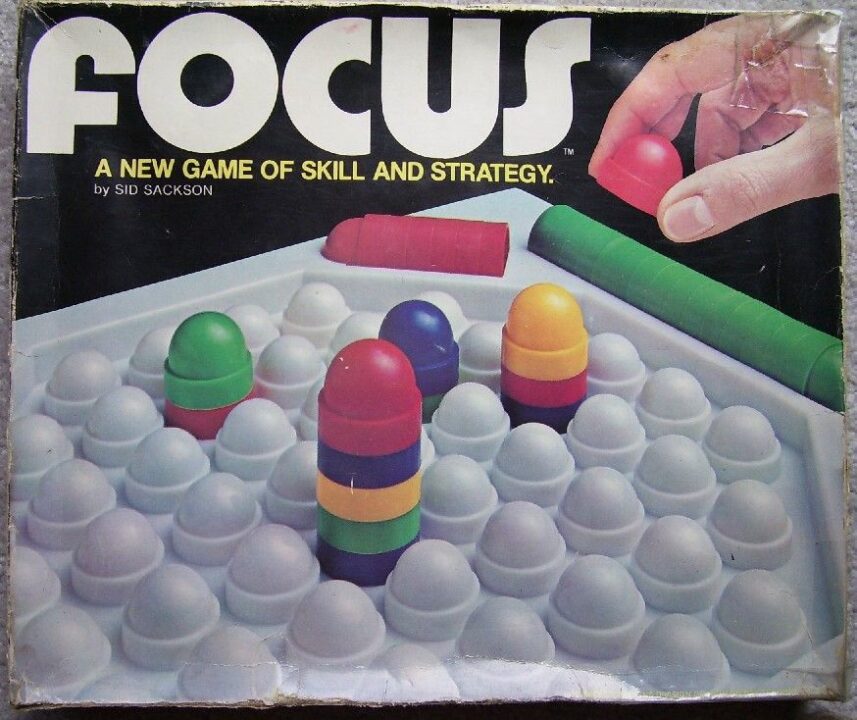Alright, folks, gather round! I’m here with a review of a true classic—one I’ve wrangled, lost, and (sometimes) won against my friends: Focus. If you like smart moves, out-thinking your rivals, and the warm glow of abstract strategy, you’ll want to keep reading. But don’t worry, I’ll be honest about the bumps along the way. Let’s see if this old-school brain-burner still stacks up or if it topples over faster than my last game.
How It Plays
Setting up
Lay the Focus board flat and grab the colored discs. Each player picks a color. Stack your discs in pre-marked spots on the board, following the handy diagram in the rules (don’t wing it, trust me, I tried and chaos followed).
Gameplay
On your turn, move a stack up to the number of discs in it. You can only move stacks with your color on top! When stacks get bigger than five, any extras pop off the bottom. If you pop off your own color, you keep them for future turns; pop off an opponent, and that piece goes to them (boo). You can aim for solo stacks, but teamwork might help—or backfire, depending who you’re playing with. There’s zero luck, only brain-boggling strategy (my favorite kind, and also my downfall).
Winning the game
You win when your rival can’t make any more moves. It’s pure out-maneuvering—think chess, but with less fancy pieces and more stacking. Last brain standing wins!
Want to know more? Read our extensive strategy guide for Focus.
How Focus Nails (and Sometimes Fumbles) Game Mechanics and Rules Clarity
If there’s one thing that can make or break a board game night, it’s messy game rules. Nothing ruins my homemade nacho cheese faster than a twenty-minute debate about whether Uncle Larry can actually make that move. Luckily, Focus (or Domination, if you knew it during its rebellious teen years) keeps things pretty clear most of the time, though it does have its quirky moments.
The basics? Simple as pie. You move stacks of colored disks around the board, but only the player whose color is on top gets to move the whole pile. It’s like a stack of pancakes where only the top one gets syrup. The rules are direct, and by our second playthrough, even my friend Mark – who thinks the instructions for spaghetti are too confusing – was playing like a champ. The written instructions are short, sweet, and come with diagrams that even my sleep-deprived self could follow after a long Friday.
Yet, Focus does toss in one or two head-scratchers. For example, when piles get huge, remembering all the powers you have can feel like herding cats. We had to refer back to the rules more than once, especially the bit about what happens when you split stacks and if you ever need to launch your own investigation into missing disks (spoiler: cats again).
I’ve played games where the rules need a degree in ancient scripts, so Focus does a decent job overall. Want to know if Focus sparks fiery competition or the drama of a soap opera at a birthday party? Next up, I’ll share the scoop on player interaction and strategy depth—keep your seatbelt fastened!

Player Interaction and Strategy Depth in Focus
If you love good old competitive fun, Focus delivers a hearty portion of it. During our game night, I saw my friend Dave actually grimace (his face stuck that way, too) because I snatched away his stack in one sneaky move. That sort of ruthless drama happens all the time here. This is not a “sit quietly and shuffle pieces” kind of game—you’re in each other’s business from start to finish, scooping stacks, blocking moves, and plotting evil board domination.
Strategy in Focus is way deeper than it first looks. You can only move stacks up to five pieces and only the top token belongs to you, which makes things a bit mind-bending. Turns become a puzzle: Do you build a tall stack for power, or keep your pieces spread out to move faster? You might feel clever, then someone sweeps in and tramples your plans. I love this give and take. Every decision matters, and you really have to watch what your opponents do. I learned the hard way that ignoring the left side of the board is a recipe for disaster. Thanks again, Dave.
There’s almost no luck here—your fate lies in your hands, unless you count the fact that my dog Buster once jumped up and sent all the pieces flying (officially not part of the rules). But if you want an intense battle of wits with real back-and-forth, Focus delivers it. There are a few moments where the board gets so chaotic it feels like chess after three espressos.
Next, let’s check if the lovely plastic bits and flashy board offer as much excitement as the gameplay—will the components stand up to Buster’s paw of doom?
Focus Board Game: Component Quality and Board Design Unpacked
Let’s talk about the first thing everyone notices when they open Focus: the components. Now, I’ve opened some board games that greeted me with flimsy tokens and boards that seemed allergic to being flat. Focus doesn’t go that route. The board is sturdy enough to survive a bumpy ride in a game bag. It’s also got this eye-catching, sort of psychedelic pattern—like someone raided a ‘70s wallpaper factory and said, “Yeah, put that on there.” And honestly? I dig it. It’s retro, but not in a “my grandma had that rug” kind of way.
The playing pieces are chunky, stackable plastic discs. I’ll admit, my inner child loves clicking them together. They’re a nice size for adult hands (and even better for sneaky cats, if you have any around). The colors are bold and distinct enough that even my color-vision-challenged friend managed to keep track of her stacks. No squinting, no cheating, no excuses. One very minor gripe: over many games, the discs can pick up tiny scuffs. They’re not made for being thrown across the room in a fit of rage, but, hey, what board game is?
As for the insert, well, it’s what I’d call “basic but functional.” Pieces fit, lid closes—even after some creative re-packing by my least organized friend. There aren’t fancy trays or fancy legends, but that’s probably for the best. Less time packing, more time playing (or arguing strategies).
So, if you want a game with smooth stacks, durable pieces, and a groovy throwback look, Focus gets a thumbs up from me in the component department.
But components are only worth so much—how many times can you get this game to your table before it starts to feel samey? Up next: Replay value and overall balance. Spoiler: It’s not just about who can stack discs the fastest…
Replay Value and Overall Balance in Focus: Why I Keep Coming Back (Sometimes)
When it comes to replay value, Focus has a unique spot on my shelf. I have a habit of dragging my friends in for ‘just one more round’—which, honestly, turns into three. The reason? The game changes every time depending on how cruel (or not) my opponents feel. The stacking and movement system means you can’t really fall back on one boring, safe strategy. You need to adapt, and if you don’t, well, enjoy watching your pieces get launched off the board. Again.
Now, about the balance. Focus doesn’t mess around with luck. No dice, no cards, just pure tactical scheming. If you lose, it’s your fault. Or at least, that’s what I tell my friends when they accuse me of being a board-hog. The game scales well between two to four players, though with four, chaos is your new roommate. But it’s a fair chaos—everyone has the same shot and no one gets knocked out early or left sulking with a useless hand.
Of course, the game’s age peeks through sometimes. If you play with someone who takes twenty minutes per turn, Focus can feel less like a brain-burner and more like a patience test. But bring a crew who likes to play at a good pace and you’ll squeeze every bit of joy from this classic.
If you want a game with endless ways to win and where your brain—not a lucky dice roll—decides your fate, then yes, I recommend Focus. Just don’t blame me when your family stops speaking to you over a stacked tower.
Conclusion
Well, that’s a wrap on my review of Focus. After playing it with friends (and surviving a few heated debates about stack sizes), I can say it’s a keeper for fans of deep, head-to-head strategy. The rules are clear, the components are solid, and there’s basically zero luck—so if you lose, you can’t blame the dice. It stays fresh with every play, and you might even find yourself dreaming about your next big move. However, be ready for a brain workout and maybe the odd grumble if your plans topple over, just like the game pieces. If you’re after a fair, balanced game that makes you think (but not too hard), Focus deserves a spot on your shelf. Thanks for sticking with me till the end—now go and challenge your cleverest friend to a match!


